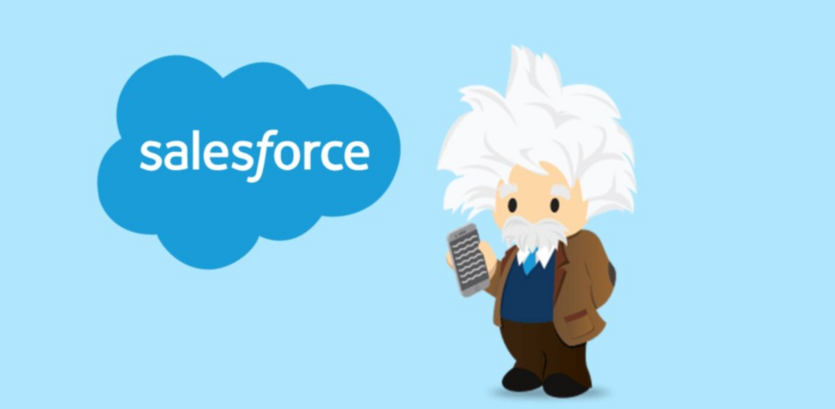Connections

Salesforce Execs Focus on Digital HQs, Trust and More at Dreamforce
Story Highlights
The COVID-19 pandemic has created a need across enterprises to have “digital headquarters” in addition to their physical headquarters, according to Marc Benioff, Salesforce CEO, chairman and co-founder.
The company realized that, during the pandemic, “all of our building are closed” and “it’s a good thing we have a digital headquarters,” he said Sept. 21 during the opening session at the company’s annual Dreamforce conference in San Francisco.
Company executives also focused on the need for trust and Salesforce platform enhancements during the session, which, like the rest of the conference, was also webcast.
“A digital headquarters becomes an essential building block to building a trusted enterprise in today’s world,” Benioff said.
“We need physical headquarters. We need a digital headquarters,” he said. After all, “we’re going to still be working in our homes” for a while but can continue to safely hold events like Dreamforce, he noted.
Despite the ongoing pandemic and what many now argue is a decreased need for large enterprise facilities and office space, the company is building a “Salesforce ranch” for training that Benioff said will be a “huge facility.”
The “Crisis of Trust”
“We are definitely in a new world” in which we have been seeing a “crisis of trust” globally, Benioff said. Salesforce’s goal is to “transform that world into a world of trust” again, he noted.
“There’s a playbook for this trusted enterprise” that organizations need to be today, he said. It includes: the need to be “focused on trust today more than ever before”; the need to have “direct, trusted relationships with our customers”; the need to “build digital headquarters because our physical headquarters are just not fully opened yet” and, even when they are open, “some people will continue to work remotely”; a need to “get together safely”; and a need to address the world’s carbon and sustainability crisis, he said.
On that latter front, he pointed out Salesforce is now a “net zero” company across its full value chain and has also achieved 100% renewable energy for its operations. Salesforce developed emissions reductions strategies across “four key categories — work from anywhere, infrastructure, business travel, and supply chain,” it said.
“We have to reduce emissions” and remove carbon, and biodiversity “can make it happen,” Benioff said, adding he loved the European Green Deal.
Salesforce also unveiled the latest version of its sustainability initiative, Sustainability Cloud 2.0, that it said was designed to “accelerate” customers’ paths to net zero, “empowering organizations to track and reduce their carbon emissions and become a sustainable business.” New Sustainability Cloud innovations include Slack-First Sustainability for better collaboration with suppliers, a carbon-offset ecosystem, and industry-specific climate action plans, Salesforce said.
The Pandemic Crisis
Salesforce responded to the pandemic crisis by building contact management systems, contact tracing systems and vaccine management systems, Benioff said, noting the company has helped to monitor 235 contact tracing cases.
The company also delivered 60 million pieces of personal protective equipment (PPE), managed 108 million vaccine doses, protected 200 million with contact tracing and expects to manage 2 billion vaccine doses to 190 countries by the end of 2021, according to Salesforce.
Salesforce also announced Health Cloud 2.0, technology it said was “designed to empower businesses and governments to deliver better health and safety for their employees, customers, and communities.”
Salesforce Platform Enhancements
Bret Taylor, Salesforce president and COO, focused on the company’s next-generation Customer 360 platform that he noted includes Slack (that can serve as a company’s digital HQ), Customer 360, the Einstein artificial intelligence platform, and Hyperforce.
The company announced new capabilities that integrate Slack across Salesforce’s products and industry solutions, along with new Slack innovations that it said “improve collaboration across organizational boundaries and empower teams to embrace asynchronous working.”
Following the August launch of new Slack integrations across Sales, Service, Marketing, and Analytics (Tableau), Salesforce has now launched integrations across most of its products, it said, including Commerce, Experience, Platform, Trailhead, MuleSoft, and Quip, and its industry clouds and products including Sustainability, Corporate and Investment Banking, Healthcare and Life Sciences, Philanthropy, Nonprofit, and Education.
Salesforce also launched new Slack functionality designed to give customers the “tools they need to thrive in this new era of digital-first work,” it said. Clips are a new way to easily create and share audio, video, and screen recordings within any channel or DM in Slack, letting people work more flexibly, on their own time, according to Salesforce. GovSlack, meanwhile, is a version of Slack that Salesforce said “meets the most stringent security and compliance needs of the U.S. government and the agencies they work with.”
Hyperforce, announced by Salesforce in December, is a reimagination of its platform architecture that it said was built to “securely and reliably deliver the Salesforce Customer 360” experience that includes Sales Cloud, Service Cloud, Marketing Cloud, Commerce Cloud, Industries and more, on major public clouds.
Meanwhile, Einstein is making more than 100 billion predictions each day, according to Salesforce. “This means that every interaction is personalized,” Taylor said. It also means if you are a customer service agent, “you don’t need to search” for an answer to a customer’s question because “Einstein’s giving it to you so you can get your customer on the road and make her successful,” he noted.
“All of this is built on Hyperforce,” its “next-generation public cloud platform,” and the company “spent the past year making this even better,” he said. Hyperforce allows companies to “meet the needs of your customers locally – that means data residency, it means compliance, it means security,” he noted.
Also new, meanwhile, is Salesforce’s EU Operations Zone, which it said will be live in 16 regions by the end of 2022









